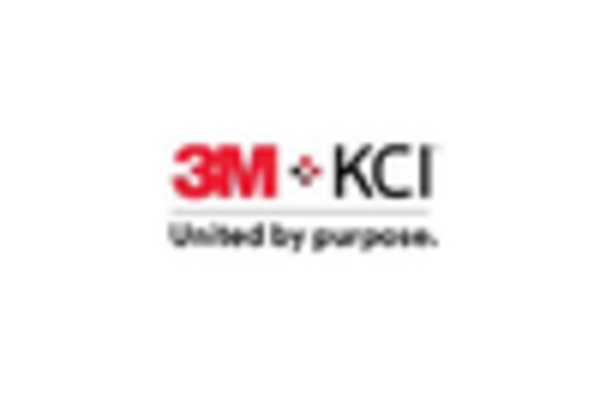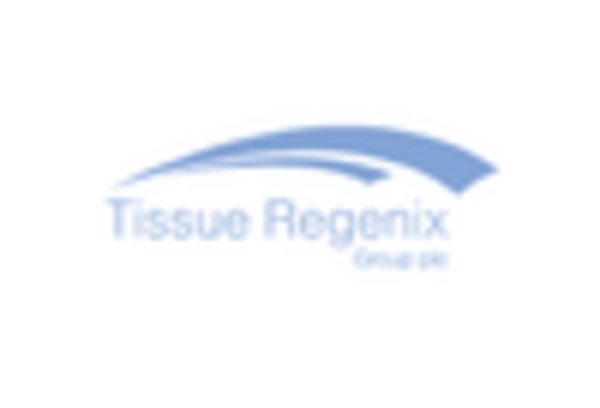Rising Demand for Regenerative Medicine
The tissue engineering market is experiencing a notable surge in demand for regenerative medicine, driven by an increasing prevalence of chronic diseases and injuries. As the population ages, the need for innovative treatment options that promote tissue repair and regeneration becomes more pressing. According to recent estimates, the regenerative medicine sector is projected to reach approximately $100 billion by 2025, indicating a robust growth trajectory. This demand is further fueled by advancements in stem cell research and the development of novel biomaterials, which enhance the efficacy of tissue engineering applications. Consequently, the tissue engineering market is positioned to benefit significantly from this trend, as healthcare providers seek effective solutions to address the growing burden of chronic conditions.
Growing Investment in Healthcare Infrastructure
The tissue engineering market is benefiting from a significant increase in investment in healthcare infrastructure across the United States. Government initiatives aimed at enhancing healthcare facilities and research institutions are creating a conducive environment for the growth of tissue engineering technologies. For instance, funding for biomedical research has seen a substantial rise, with federal allocations reaching over $40 billion in recent years. This influx of capital is facilitating the development of advanced tissue engineering solutions, thereby expanding the market. Furthermore, collaborations between academic institutions and industry players are becoming more prevalent, driving innovation and accelerating the commercialization of new products in the tissue engineering market.
Technological Innovations in Tissue Engineering
Technological advancements play a pivotal role in shaping the tissue engineering market. Innovations such as 3D bioprinting, which allows for the precise fabrication of complex tissue structures, are revolutionizing the field. The integration of artificial intelligence and machine learning in tissue engineering processes is also gaining traction, enabling more efficient design and production of tissue constructs. These technologies not only enhance the functionality of engineered tissues but also reduce production costs, making them more accessible. As a result, the tissue engineering market is likely to witness increased investment in research and development, fostering further innovations that could lead to groundbreaking therapies and applications.
Increasing Awareness of Tissue Engineering Applications
There is a growing awareness among healthcare professionals and patients regarding the potential applications of tissue engineering. This heightened awareness is leading to an increased adoption of tissue-engineered products in clinical settings. As more healthcare providers recognize the benefits of these innovative solutions, the tissue engineering market is likely to expand. Educational initiatives and conferences focused on tissue engineering are also contributing to this trend, providing platforms for knowledge exchange and collaboration. The market is expected to see a rise in demand for tissue-engineered products, particularly in orthopedics and wound healing, as awareness continues to grow.
Supportive Regulatory Environment for Tissue Engineering
The regulatory landscape for the tissue engineering market is evolving to support innovation while ensuring patient safety. Recent initiatives by regulatory bodies aim to streamline the approval process for tissue-engineered products, making it easier for companies to bring their innovations to market. This supportive environment is crucial for fostering growth in the tissue engineering market, as it encourages investment and research. The establishment of clear guidelines for the development and commercialization of tissue-engineered products is likely to enhance confidence among stakeholders, further driving market expansion. As regulations become more favorable, the tissue engineering market is poised for accelerated growth.

















Leave a Comment